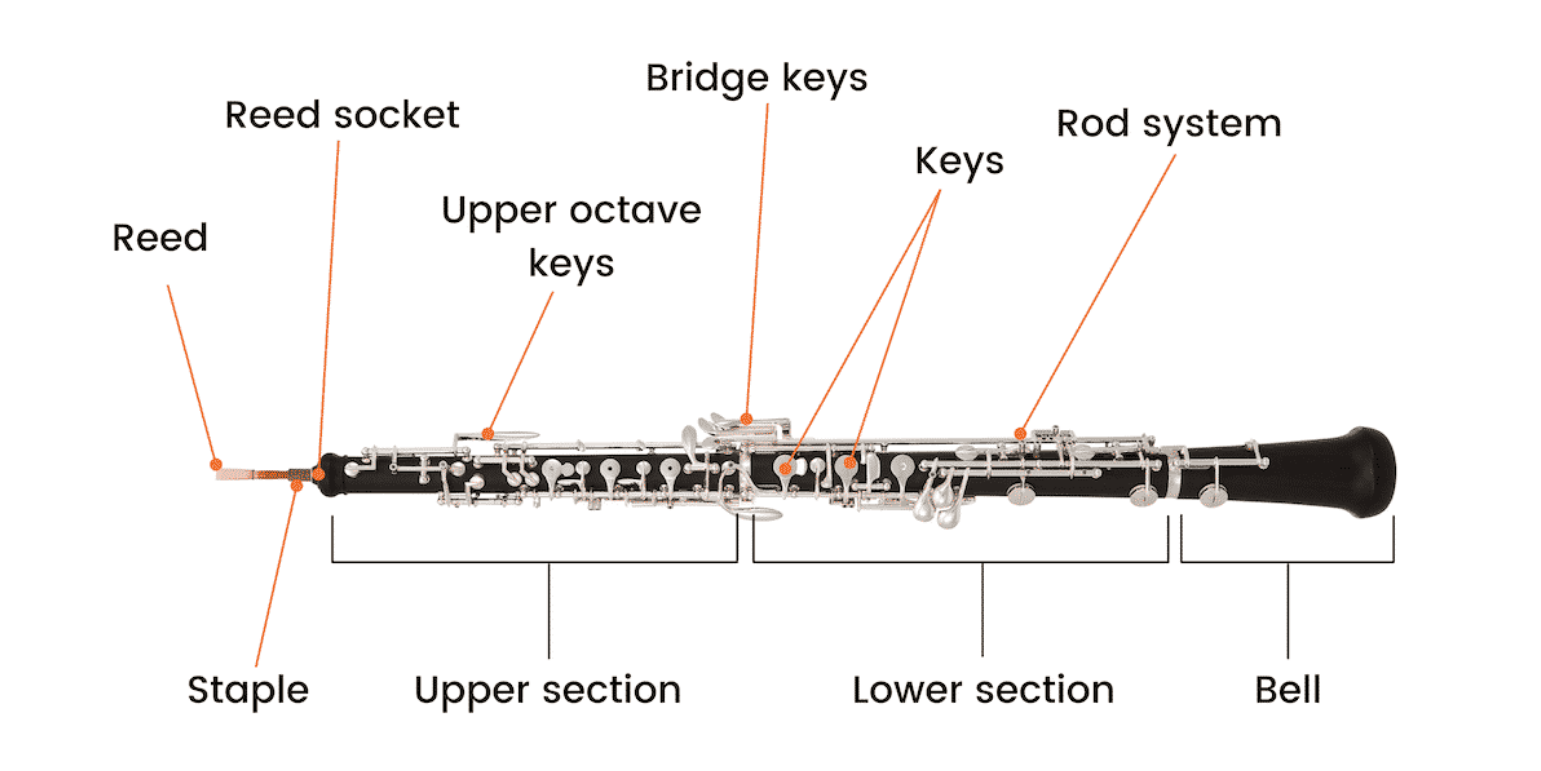Anatomy of the Oboe (4/17/2025)

The oboe is a unique and expressive woodwind instrument known for its bright, penetrating sound. Let's explore the key components that make up this fascinating instrument and how they work together to produce music.
Reed and Staple
The heart of the oboe's sound lies in its double reed. Made from two pieces of cane, the reed is attached to a metal tube called the staple. When air is blown between the reeds, they vibrate to create sound. The quality and condition of the reed significantly impact the instrument's tone and pitch.
Upper Section (Top Joint)
The upper section of the oboe connects to the reed and houses several essential components:
-
Tone Holes and Keys: The body features tone holes covered by pads. Pressing keys opens or closes these holes, allowing the player to produce different notes.
-
Octave Keys: These keys enable the oboe to play higher pitches by shifting the air column, effectively doubling the pitch of the note.
-
Tenons: Cork-covered joints that connect the upper section to the lower section and the bell, ensuring a tight seal and proper alignment.
Lower Section (Bottom Joint)
The lower section is wider and contains additional keys
-
Bridge Keys: These connect the upper and lower sections, facilitating smooth transitions between notes.
-
Conical Bore: The gradually widening interior shape contributes to the oboe's distinctive tone.
Bell
The bell is the flared end of the oboe where sound exits. Its shape and size influence the instrument's tonal quality and projection.
The oboe's anatomy is a harmonious blend of design and function, with each part playing a vital role in producing its unique sound. From the reed to the bell, understanding these components enhances our appreciation of this expressive instrument.


